Blue Jacaranda Tree Grow & Care Guide
Written by Iris
Sep 11 2021
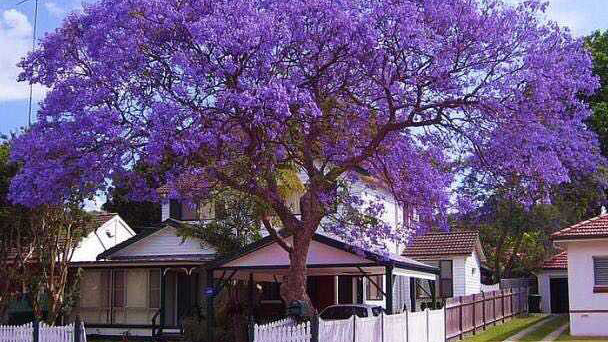
Blue Jacaranda Tree is a highly ornamental tree species, which can usually grow to about 15m. The origin of Blue Jacaranda Tree is Brazil in South America. It likes a warm growing environment, and it also likes to be exposed to sunlight. It is suitable for growing in tropical and subtropical areas and is often planted as a street tree. Here is the guide of how to grow and care for Blue Jacaranda Tree.
As a dwarf variety, blue jacaranda Tree can be grown in a container about 18 inches in diameter, although does protect plants from frosts going below -2 degrees. In the past, Jacaranda would've been too large for gardens, and would have been grown for their beautiful fern-like foliage, however Blue Jacaranda Tree will give that foliage plus the stunning blue flowers from late May to June.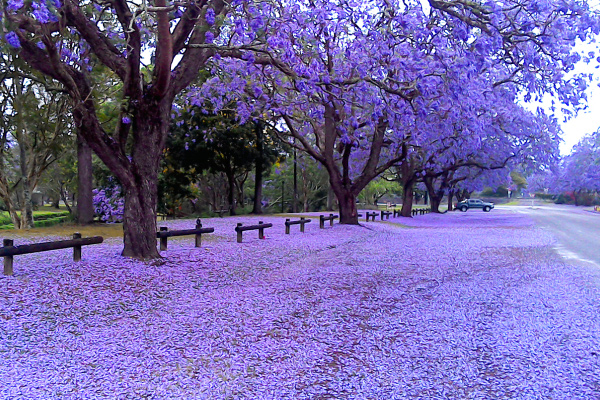
According to the experience, when the soil is dry, it’s time to water. Use high-quality bai soil, which will help avoid overwatering problems. When the purple flower sheds its leaves, cut back on the water. It is best to water trees regularly because they are active in different ways depending on the weather. If your water does not permeate deeply into the soil, the tree may be resulting in chlorosis.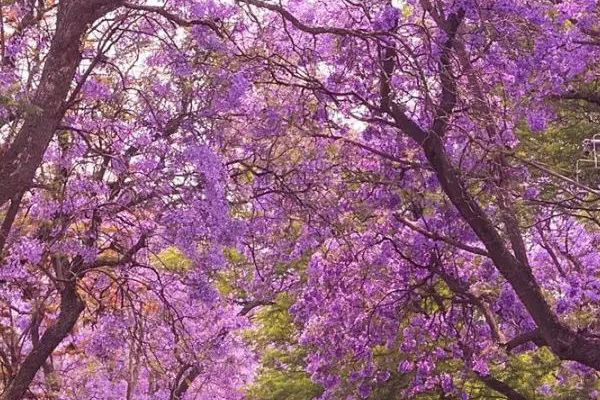
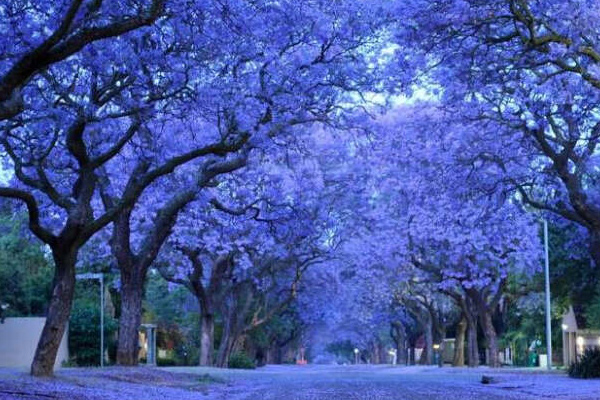
J. mimosifolia 'Alba': Also called 'White Christmas', the Alba cultivar is a full-size jacaranda tree with a similar habit and care needs to the species tree. It can grow to be about 40 feet tall and up to 60 feet wide. Its foliage is often more lush than that of the species tree, and its blooms may arrive a little earlier, starting in April in some climates.
J. mimosifolia 'Bonsai Blue': A relatively new dwarf cultivar, 'Bonsai Blue' matures at only 10 to 12 feet tall and 6 to 8 feet wide. Its flowers are similar to those of the species tree, and it grows in USDA hardiness zones 9 through 11.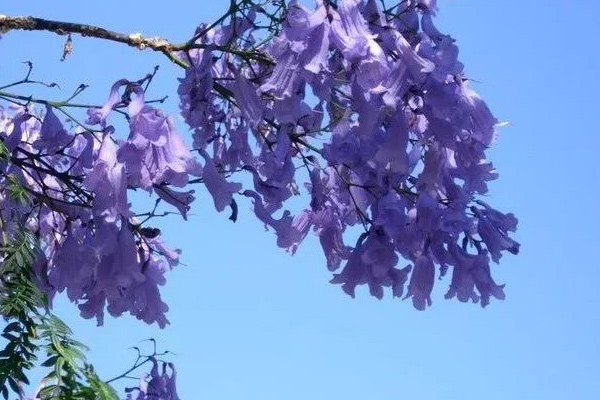
Where to Grow Blue Jacaranda TreeHow to Grow & Care for Blue Jacaranda TreeBlue Jacaranda Tree Care - LightBlue Jacaranda Tree Care - SoilBlue Jacaranda Tree Care - WaterBlue Jacaranda Tree Care - Temperature & HumidityBlue Jacaranda Tree Care - FertilizerBlue Jacaranda Tree Care - PruningBlue Jacaranda Tree Care - Pests & DiseasesHow to Propagate Blue Jacaranda TreeGrow Blue Jacaranda Tree from SeedsGrow Blue Jacaranda Tree from Stem CuttingsGrow Blue Jacaranda Tree from DivisionVarieties of Blue Jacaranda Tree
Where to Grow Blue Jacaranda Tree
Blue Jacaranda Tree prefers well-draining, enriched soil and will require regular watering, especially during its first growing season and when grown in a container. Once established, your plant will look after itself a bit better and you can reduce the frequency of watering.As a dwarf variety, blue jacaranda Tree can be grown in a container about 18 inches in diameter, although does protect plants from frosts going below -2 degrees. In the past, Jacaranda would've been too large for gardens, and would have been grown for their beautiful fern-like foliage, however Blue Jacaranda Tree will give that foliage plus the stunning blue flowers from late May to June.

How to Grow & Care for Blue Jacaranda Tree
Blue Jacaranda Tree Care - Light
Blue Jacaranda Tree prefers a location in full sun. It performs best when it receives eight to 12 hours of direct sunlight daily. However, blue jacaranda tree tolerate light shade. Keep in mind that although a jacaranda tolerates growing in partial shade, it will grow better and flower more profusely in a sunny location. Too much shade means fewer flowers. Young Blue Jacaranda Tree can be grown in a pot. If you need to bring the potted plant inside because of a cold-weather spell, place the pot in a sunny location, near a south- or west-facing window. Due to its fast growth and ultimate size, a sapling will eventually need to be transferred into the ground.Blue Jacaranda Tree Care - Soil
Blue Jacaranda Tree loves damp soil, but the roots shouldn’t be wet. It is best to use commercially available bai soil, with its organic matter and coarse clay mixed in. Jacaranda trees thrive best in sandy, acidic soil with a pH between 6.5 and 7.5. Plus, it grows on average from three to four feet a year if the soil is kept moist over the summer and does best in average weather conditions. Also, the jacaranda tree growth rate is five feet per year even if the soil is wet and the drainage is perfect.Blue Jacaranda Tree Care - Water
It is essential to water Blue Jacaranda Tree regularly until it is fully grown. As you might know, water is indispensable for the growth of all living things. It can stand occasional periods of drought, but it may shed its leaves during this duration. On the other hand, if you overwater it, you will see it losing its leaves. Sounds rather picky, doesn’t it? The rule of thumb is to gently dig your thumb into the soil before you water Jacaranda planting. Wait a few days if the soil is moist.According to the experience, when the soil is dry, it’s time to water. Use high-quality bai soil, which will help avoid overwatering problems. When the purple flower sheds its leaves, cut back on the water. It is best to water trees regularly because they are active in different ways depending on the weather. If your water does not permeate deeply into the soil, the tree may be resulting in chlorosis.
Blue Jacaranda Tree Care - Temperature & Humidity
Some jacaranda trees can be tolerant of the occasional cold weather (as low as 20 degrees Fahrenheit), but generally, this species does not thrive in climates with frequent freezing temperatures. They like a lot of heat and humidity, but can be vulnerable to trunk scald in areas with constant high temperatures.Blue Jacaranda Tree Care - Fertilizer
Yearly applications of a 10-10-10 nitrogen, phosphorous, potassium slow-release granular fertilizer will provide the tree with needed nutrients. An application rate of 1 tablespoon per square foot of soil underneath the tree's canopy is suitable.Blue Jacaranda Tree Care - Pruning
Forget about pruning Blue Jacaranda Tree altogether or you will spoil their good looks, and the tree’s shape, forever. When you prune a Blue Jacaranda Tree it then sends up vertical shoots (you’ll often see the effect on jacaranda street trees which have been pruned to make room for overhead powerlines). The normal shape for a jacaranda is that of an elegant umbrella, and the appearance of vertical branches ruins its good looks. Your only solution, if you have pruned a jacaranda, is to persist in cutting off the vertical shoots.Blue Jacaranda Tree Care - Pests & Diseases
Blue Jacaranda Tree is fairly resistant to insects and diseases. It can develop mushroom rot if the soil beneath it does not drain properly. It is also vulnerable to aphid and whitefly infestation. In this case, you can use a mixture of neem oil, pesticidal soap, and water to get rid of the outbreak. While watering, make sure the water reaches to the root or the plant may become chlorotic.
How to Propagate Blue Jacaranda Tree
Grow Blue Jacaranda Tree from Seeds
Sowing propagation method of Blue Jacaranda Tree is one of the common propagation methods, mainly in spring in March. First pick good seeds in mature season, then clean after drying, directly on the nutritional soil and controlling temperature at 20 ℃ or so, about a month or so of germination to take root, grow stem bud after transplanting processing.Grow Blue Jacaranda Tree from Stem Cuttings
Blue Jacaranda Tree cutting propagation is mainly carried out in the spring and autumn season. First select mature branches as cuttings, the base of the stem is cut into a smooth inclined shape, in order to increase the water absorption area. The base is sterilized with a proper amount of potassium permanganate, then treated once with rooting agent. Insert it directly into the soil, which will give you a high rooting rateGrow Blue Jacaranda Tree from Division
When using the propagation method of dividing Blue Jacaranda Tree, it can be carried out in combination with the potting during the Spring Festival. First, the mature and strong main stem is cut down, and the dividing stem is cut off respectively. After cleaning the dividing stem, it is processed in disinfectant once, and then placed in the culture soil after drying.
Varieties of Blue Jacaranda Tree
There are two notable varieties of jacaranda mimosifolia:J. mimosifolia 'Alba': Also called 'White Christmas', the Alba cultivar is a full-size jacaranda tree with a similar habit and care needs to the species tree. It can grow to be about 40 feet tall and up to 60 feet wide. Its foliage is often more lush than that of the species tree, and its blooms may arrive a little earlier, starting in April in some climates.
J. mimosifolia 'Bonsai Blue': A relatively new dwarf cultivar, 'Bonsai Blue' matures at only 10 to 12 feet tall and 6 to 8 feet wide. Its flowers are similar to those of the species tree, and it grows in USDA hardiness zones 9 through 11.

Latest Updated
- Benefits of Bugleweed - 7 Science-backed Health Benefits
- Bugleweed Dangers & Side Effects - Is It Poisonous?
- How to Plant Evergreen Trees - What You Should Know
- When to Plant Evergreens - Grow Guide for Evergreen Trees
- 12 Wonderful Evergreen Shrubs for Your Garden
- 12 Popular Evergreen Plants with Pictures for Beginners
- When And How To Prune A Lilac Bush Like a Pro
- How to Grow & Care for Lilac Vine (Hardenbergia Violacea)
- Japanese Lilac Tree (Syringa Reticulata) Care & Propagation Guide
- Shumard Oak Pros and Cons - What to Know
Popular Articles
- Winter maintenance of Antirrhinum Majus
- How to Grow Terminalia Mantaly Tree
- How to Grow and Care for Crossostephium Chinense
- How to grow Antirrhinum Majus in spring
- Peristeria Elata (Dove Orchid) Profile: Info & Care Guide
- Underwatered Snake Plant (Sansevieria Trifasciata) - Signs And How To Fix
- How to Care for Brazilian Jasmine Plant (Mandevilla Sanderi)
- How to Grow & Care for Graptopetalum Purple Delight in Summer
- Rosa Chinensis (China Rose): Plant Growing & Care Tips
- How to Care for Baby Sun Rose (Aptenia Cordifolia)